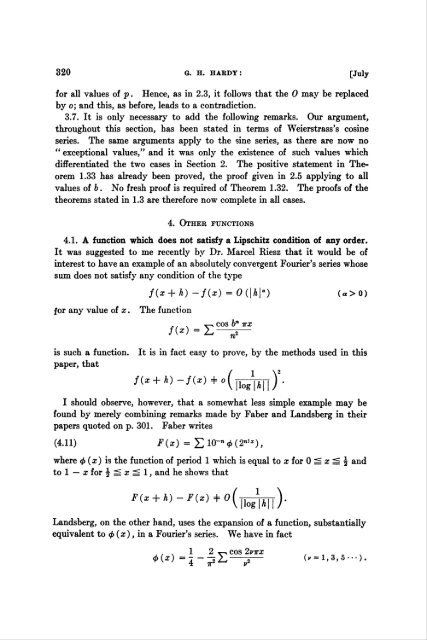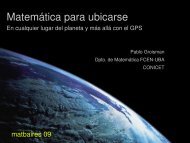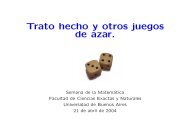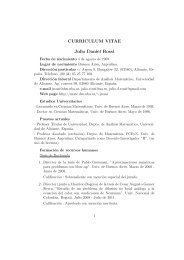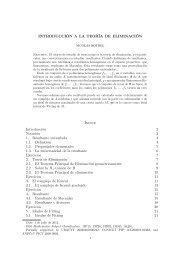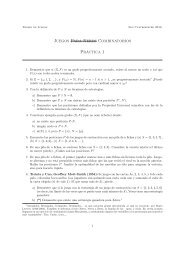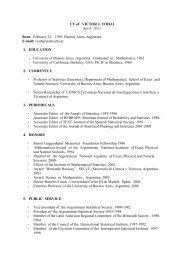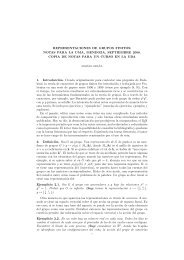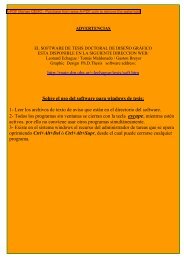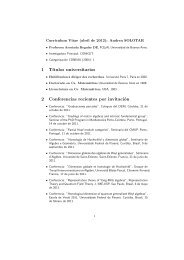WEIERSTRASS'S NON-DIFFERENTIABLE FUNCTION
WEIERSTRASS'S NON-DIFFERENTIABLE FUNCTION
WEIERSTRASS'S NON-DIFFERENTIABLE FUNCTION
Create successful ePaper yourself
Turn your PDF publications into a flip-book with our unique Google optimized e-Paper software.
320 G. H. HARDY: [July<br />
for ail values of p. Hence, as in 2.3, it follows that the 0 may be replaced<br />
by o; and this, as before, leads to a contradiction.<br />
3.7. It is only necessary to add the following remarks. Our argument,<br />
throughout this section, has been stated in terms of Weierstrass's cosine<br />
series. The same arguments apply to the sine series, as there are now no<br />
" exceptional values," and it was only the existence of such values which<br />
differentiated the two cases in Section 2. The positive statement in Theorem<br />
1.33 has already been proved, the proof given in 2.5 applying to all<br />
values of 6. No fresh proof is required of Theorem 1.32. The proofs of the<br />
theorems stated in 1.3 are therefore now complete in all cases.<br />
4. Other functions<br />
4.1. A function which does not satisfy a Lipschitz condition of any order.<br />
It was suggested to me recently by Dr. Marcel Riesz that it would be of<br />
interest to have an example of an absolutely convergent Fourier's series whose<br />
sum does not satisfy any condition of the type<br />
for any value of x. The function<br />
/(* + *)-/(*) =0(|*|-) o)<br />
, . . -^ COS If TX<br />
/(aO-L—¡p—<br />
is such a function. It is in fact easy to prove, by the methods used in this<br />
paper, that<br />
/(. + *> -/(«> + 0(^5^)*.<br />
I should observe, however, that a somewhat less simple example may be<br />
found by merely combining remarks made by Faber and Landsberg in their<br />
papers quoted on p. 301. Faber writes<br />
(4.11) F{x) = ElO-"0(2"11),<br />
where (x) is the function of period 1 which is equal to x for 0 Su x =i J and<br />
to 1 — x for jëiSl, and he shows that<br />
F(x + h)-F(x)^0(]^m),<br />
Landsberg, on the other band, uses the expansion of a function, substantially<br />
equivalent to (x), in a Fourier's series. We have in fact<br />
. . 1 2rr cos 2virx


